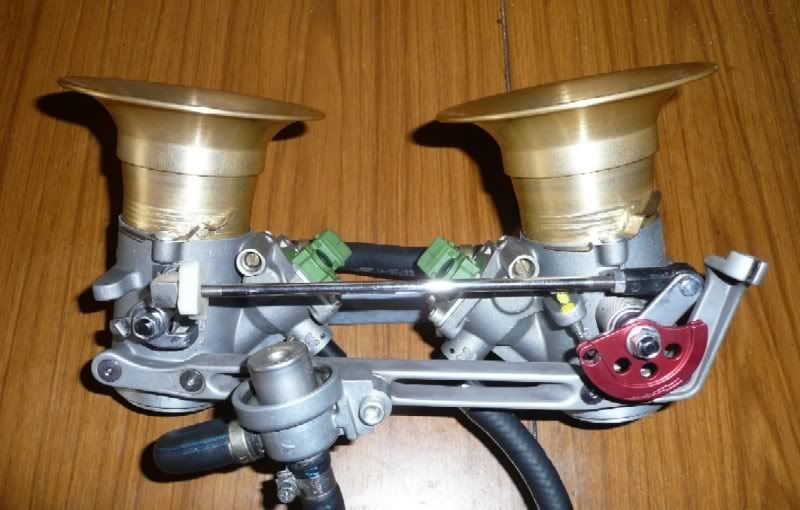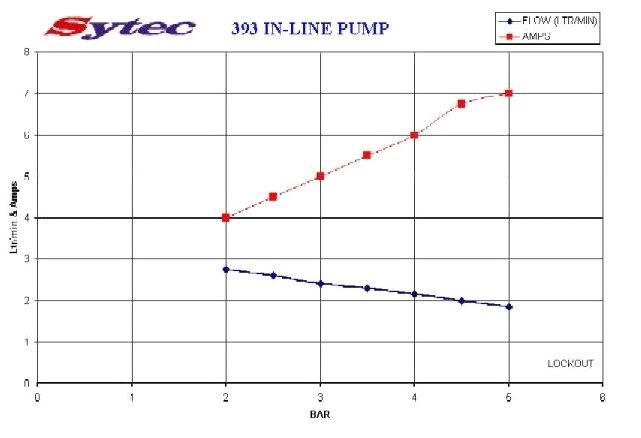DUCATI FUEL SYSTEM
The following is based upon equipment fitted to an 04 S4R 996 Desmoquattro.
Similar equipment is fitted to other steel tank fuel injected models.
Fuel injection systems provide fuel to the engine under control of the Engine Control Unit (ECU) according to a software “map” contained within the ECU, sensors for engine speed and temperature, throttle position, air temperature and barometric pressure variants also provide a mass air flow measurement and exhaust gas analysis via a lambda probe. The ECU compares the inputs to the map and determines the amount of fuel required, the fuel delivered is varied by altering the time the injector is open (Pulse Width).
The subject machine, uses the Webber Marrelli 5.9 ECU and is not equipped with mass air flow measurement or exhaust gas measurement i.e. open loop. The measurement of air flow is calculated by the ECU from throttle position and engine speed.
The ECU is basically non adjustable, a trim facility is provided for slight adjustment of the fuel mixture over the full range of operation.
The fuel pump is controlled by the ECU, when the ignition switch is turned on, the pump runs for a preset amount of time (3 to 5 seconds), and then runs again when the ECU receives a signal from the rotation sensor. It continues to run as long as engine rotation is detected.
Fuel from the pump is delivered via a filter to a fuel distribution header (or rail) in the case of the Ducati the fuel delivery hose forms the header, the pressure in the header (the system pressure) is controlled by the pressure regulator (set at 3bar), fuel supplied by the pump in excess to the requirement of the injectors is returned to the tank.
The fuel injectors take their supply from the header and atomize the fuel into the throttle body under the control of the ECU.
The pump is located in the bottom of the tank secured by a clip. A fine mesh strainer with a large surface area is connected to the pump suction and serves to protect the inner workings.
Tank Interior

The fuel pump bears the Bosh part # 0 580 453 408 it has an operating pressure of 3 bar and a capacity of 160l/h with no delivery head. Shut off head is 5bar
The pump is a positive displacement type, this means that the pump cannot produce pressure unless it is acting upon a restriction. It also has the characteristic of rising power consumption with rising restriction. At a discharge restriction of 3bar the pump is producing 2.5l/m and is consuming 5A (60W). Voltage is critical to the pump output with both pressure and volume raising and falling with voltage. Pump performance data is referenced to 13.4V at the motor terminals.

The pump is both product lubricated and cooled. It is not advisable to run it dry.
Pump manufacturing tolerances are extremely fine. Motor speeds can be as high as 10,000 RPM and the clearances within the pumping elements down to microns. Cleanliness of the fuel system is vital, with an efficient high quality filter as an essential part of the fuel system.
The 8 micron fuel filter is connected to the outlet of the pump by a hose secured with clamps, a round aluminium canister, the filter is retained in a spring clip secured to the tank. The filter is directional and should be installed with the direction arrow pointing away from the pump.
A visual inspection of the filter is not possible but the current draw of the fuel pump, measured in amps, can indicate a blocked or obscured filter. 5 to 6 amps would be a normal reading.
















 Linear Mode
Linear Mode

